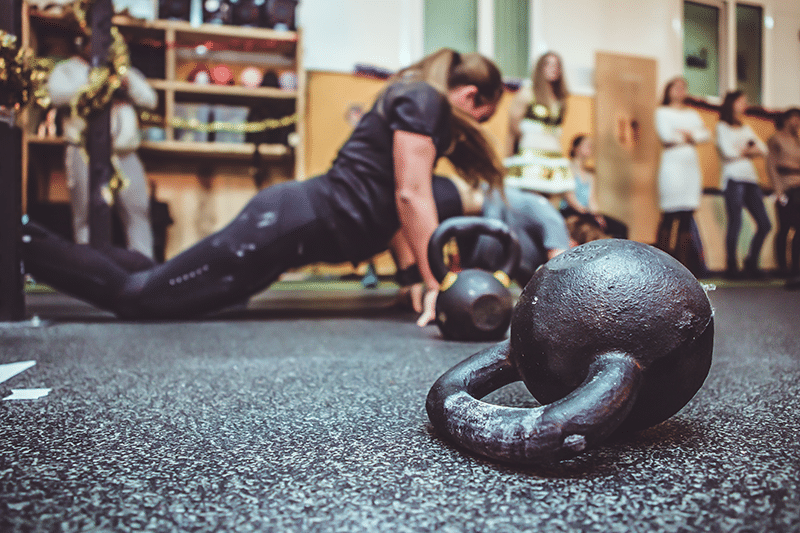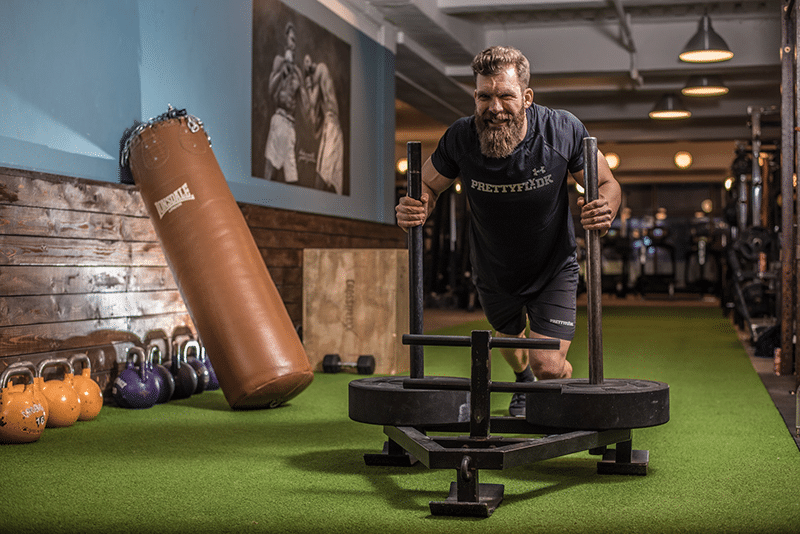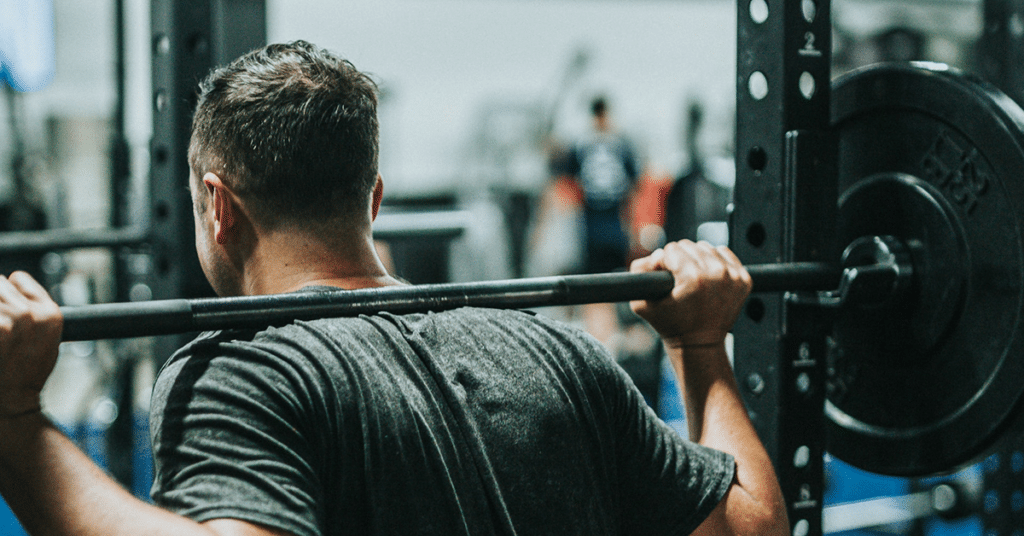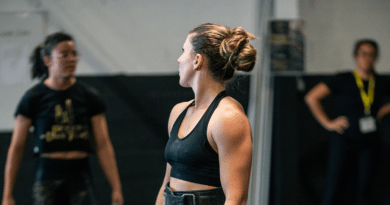How to Sumo Squat – Benefits, Mistakes, Technique and Muscles Worked
This detailed guide will help you master the Sumo Squat, a tremendously useful exercise when performed and programmed correctly.
Foundational compound exercises such as the Squat are exceptionally effective ways to strengthen the entire body, improve coordination and enhance mobility and general health.
What is the Sumo Squat?
The Sumo Squat is a wide stance Squat variation that targets the inner thigh muscles (adductors) in a unique and challenging way.
The toes are also pointed outwards to a much more exaggerated angle than a traditional Squat.
This changes the hip, knee and feet positioning and provides a unique new stimulus for your body.
Muscles Worked by the Sumo Squat
The Sumo Squat works the body much like any other type of Squat and targets the:
- Quadriceps
- Gluteus
- Hips
- Hamstrings
- Calves
- Inner thighs
- Core and abs
You will notice increased muscle and strength gains on the inner thighs.
“There is simply no other exercise, and certainly no machine, that produces the level of central nervous system activity, improved balance and coordination, skeletal loading and bone density enhancement, muscular stimulation and growth, connective tissue stress and strength, psychological demand and toughness, and overall systemic conditioning than the correctly performed full squat.” Mark Rippetoe
Benefits of the Sumo Squat
The Sumo Squat has many benefits.
Stronger Inner Thighs for Better Balance
The adductors play a key role in overall balance. Training this muscle group will therefore help to improve your balance and general coordination for sports, exercises and life in general.

This is useful for everyone from trail runners descending mountain routes through to kickboxers.
Improved Lower Body Strength
Sumo Squats build lower body strength. This is highly functional and beneficial.
A Different Stimulus for Muscle Growth (Hypertrophy)
Sumo Squats work well within muscle building programs.
If you want to tome your legs and add muscle mass then this exercise will provide an alternative way to stress and challenge your body.
Great for Rehabilitation and Recovery
The movement is often included in rehabilitation and recovery programs for athletes.
The slow movement is a great way to rebuild muscle and strength whilst paying close attention to how the overall body feels and moves.

How to do the Sumo Squat
Use the following instructions to master the exercise.
Note: The Sumo Squat can be performed with many different loads, a kettlebell, dumbbell or barbell for example. These instructions describe the bodyweight version.
- Adopt a wide stance with your feet wider than hip width apart
- Point your toes outwards by roughly 45 degrees. Rotate your hips as well
- Inhale and brace your glutes and core
- Break at the hips (push them back) then bend the knees and descend slowly
- Maintain a straight spine and tight core
- Break parallel, pause, then rise to the starting position. Exhale
Sumo Squat Technique Tips
Experiment with different angles for your feet and the width of your stance. Everyone has their own unique physiology so you must find the best stance for yours.
Keep your knees forwards, your core tight and your spine straight at all times.
Make sure to pay attention to your balance. Focus on your bodyweight being evenly distributed across your heel and midfoot.
Beginners Need to Start with The Basic Air Squat
If you are a total beginner to squatting then make sure to work on the Air Squat first before you start learning to Sumo Squat.
This will help you understand the movement mechanics, breathing and body positioning.
Sumo Squat Variations
Switch up your training and programming with these variations.
Tempo Squats
Tempo Squats slow the movement right down so the athlete cannot bounce through or use momentum to generate force on the way back up.
They reveal weak spots in strength and mobility and provide additional time under tension
Pause Squats
With this variation you must come to a complete stop at the bottom of the movement. Pause for two seconds or more then complete the rep.
Sumo Squat Rotation
Adding a rotational element to the exercise will allow you to work across another movement plane.
This is also great news if you want to target your core and abs.
To do this, add a twist as you come up from the bottom of the Squat. Alternate to a different side after each rep. Make sure you pivot your feet to assist with the movement.
Sumo Squat to Kettlebell Swing
This also works with a Dumbbell Swing.
After each rep complete a full Kettlebell Swing. Use your hips to propel the kettlebell and don’t forget to brace your breath and body and maintain a straight spine.
When you perform each Squat, hold it in front of your body as you would with a Goblet Squat.
Sumo Jump Squat
This is an excellent way to add an explosive plyometric element into your training.
You need to drive up with power and precision and jump upwards after you return to the starting position from the bottom of the Squat.
Try to do this in one fluid motion. Land softly and immediately descend into the next rep.
Common Mistakes
Make sure you aren’t making any of these common mistakes with the Sumo Squat. This will ensure your safety as well.
Rounding the Back
A neutral, straight spine must be established and held at all points throughout the full range of motion.
This mistake can be caused by a weak core, a weight that is too heavy or poor mobility. All three can be remedied with the right work.
If an athlete cannot maintain a straight spine whilst under load then try the movement with no load at all.
Leaning Too Far Forwards
This mistake is usually a sign of tight calves and hips. Try taking longer warm ups where time is dedicated specifically to activating these parts of the body.
Mobility work will also keep to eliminate knots and tight muscles.
Also, strength work for the lower back (erector spinae) and glutes can help.
Inwardly Caving Knees
This is a common mistake across many types of Squat.
Often caused by tight hips and/or weak glutes, it can also symbolise that the weight is simply too heavy for the lifter.

Sumo Squat Alternatives
These alternatives will all target and work the body in a similar way:
- Sumo Deadlift
- Step ups
- Rear Lunge
- Goblet Squat
- Lateral Lunges
- Kettlebell Swings
Differences Between Sumo Squats and Regular Squats
The main differentiation between Sumo Squats and Regular Squats is foot placement.
- Regular Squats are performed with the feet roughly shoulder width apart
- Sumo Squats are completed with the feet wide
Another difference is the angle that the toes are pointed.
- Regular Squats point the toes forwards, close to 90 degrees
- S Squats point the toes out at a much wider angle, about 45 degrees
The differing foot placement alters the angle of the hips, knees and torso. This has an effect on which muscles are emphasised. All Squats strengthen the glutes, quadriceps, hamstrings, hip flexors and calves.
- Regular Squats have a less vertical torso position.
- S Squats have a more vertical torso angle. They also work the inner thights (adductors) to a greater degree
FAQs
Got more questions? Scroll through to find the answers.
Are Sumo Squats Bad?
No, they are a safe exercise when performed correctly. Move slowly, with purpose and keep your core and breathing tight. Don’t let your knees cave inwards or your back round.
Follow the instructions for correct form and you will be fine.
Are Sumo Squats Bad for Knees?
No, the exercise is not bad for knees. Like any Squat with decent, the Sumo Squat will help to strengthen and support your knees.
As a rough rule, the narrower you place your legs, the more you will focus on the quads.
Do Sumo Squats Build Muscle?
Yes, the movement does build muscle. You must program the lift accordingly and use enough weight so that your body is considerably taxed.
Think 3 – 5 sets of 8 – 12 reps for hypertrophy as a general rule.
Will Sumo Squats make your Thighs Bigger?
If you train for muscle mass and hypertrophy then your thighs will get bigger.
Strength work will also lead to an increase in size and tone.
Are Sumo Squats Better for Glutes?
They will target the glutes more than a traditional squat because of the wider foot placement and upright torso position. The exercise will also torch your inner thighs.
Why do my Knees Crack when I Squat?
During many lower body exercises the pressure on the knee joints can compress gas that is present in the synovial fluid around your knees. The popping or cracking you hear is that gas being expelled.
Synovial fluid lubricates the joints and allows them to move smoothly.
Learn More
If you enjoyed these training tips, learn how to train with cables.




